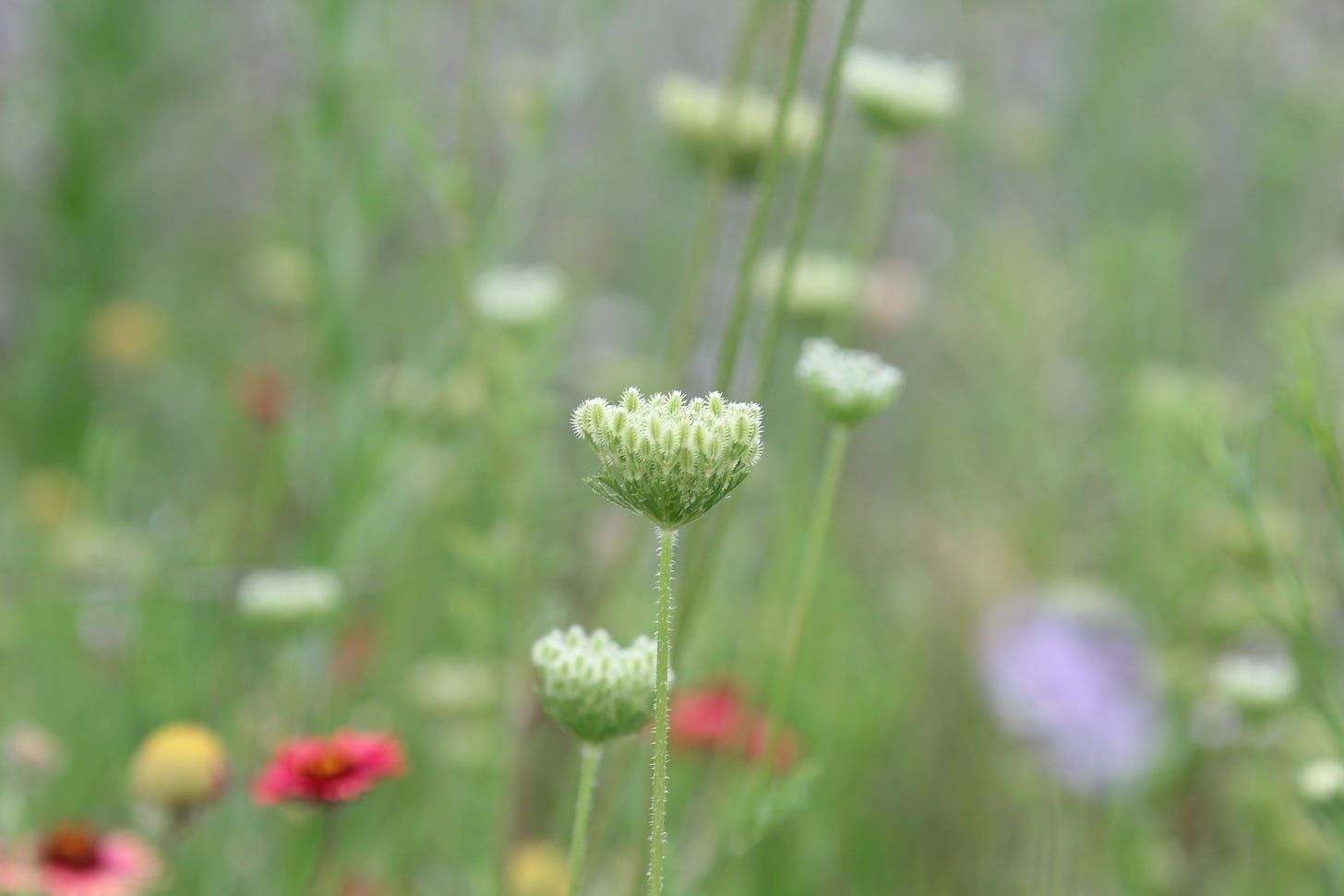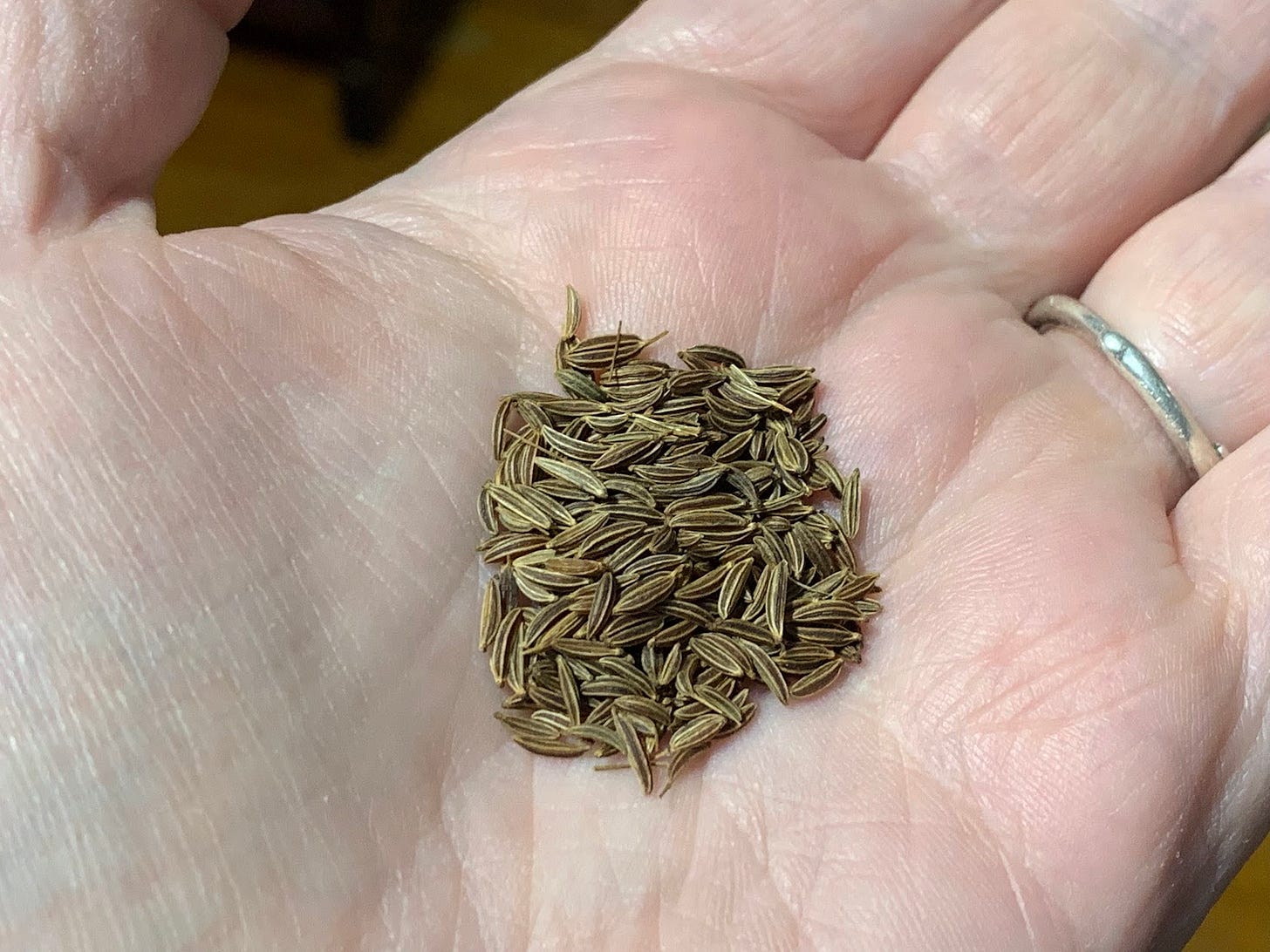When I pulled today’s spice packet out of the calendar, the first thing that popped into my head wasn’t how I could use this in a recipe. No, it was ‘I wonder if I could grow this?’ and that’s not the first time I’ve thought that about the spice packets, I had a similar thought when it came to the anise seeds as well. I am, after all, as much a gardener as I am a cook!
Caraway, anise, and fennel all belong to the same family of plants, which also incorporate carrots and parsnips. This is the same family in which we find parsley, cumin, coriander (cilantro)… I think you get the idea that this family offers us a rich variety of flavor in leaf, root, and seed. Well worth growing in the garden! In fact, caraway leaves and roots are also edible, making my idea of seeing how well these germinate not quite so crazy as it might seem to the first look.
I will sow some of these, and the anise, and see what happens! Why not? Like most carrot family members, they likely won’t transplant well (parsley is a rare exception) so I will go ahead and scuff them into one of the empty garden beds. This is the right time of year for it, as they prefer cool weather for growing, and will survive the light frosts with a bit of mulch or covering once they have emerged in three weeks or so. I’ll be planting out wildflowers for winter sowing as well, so it won’t even be any trouble at all.
As for how to use it? Well, the classic uses are seasoning in rye bread, sauerkraut, and soups or stews. Like anise seed, this has a licorice flavor, just not nearly so strong as anise. This means it is perceptually somewhat sweet, which works well in cakes and cookies or teas. Caraway also brings a bit of a citrus note, something that bites like black pepper, and a strong relationship to dill seed. I plan to use it to accentuate the flavors of it’s near relatives, roasting it with carrots and parsnips, perhaps along with salt, a drizzle of olive oil, and balsamic vinegar. I think you will find that in this application, cracking the seeds with a spice grinder or mortar and pestle will help release the flavor much better than leaving them whole. They don’t need to be fully ground, although you could do that as well. Depends if you want a little crunch!

Turning to my gardening books, I find that caraway (as, again, many of it’s near relatives do) has medicinal uses. Chiefly in the prevention of flatulence, which makes it’s inclusion in cabbage dishes seem so sensible! It has been used to help mothers increase their milk production, and also to ease menstrual pain, taken as a tea. Rodale’s Encylopedia of Herbs (which I really recommend to any gardener or cook) tells us the seed has been found in stone-age trash middens, indicating it’s use well back into prehistory, and we know the Greeks and Romans relied on it for seasoning and medicine both.
I will plant some, and all my sources assure me that this pretty plant, edible in all parts, will also make itself at home in the garden, self-sowing so that successive years should not need me to plant it myself again. I look forward to that, as a lazy gardener!





